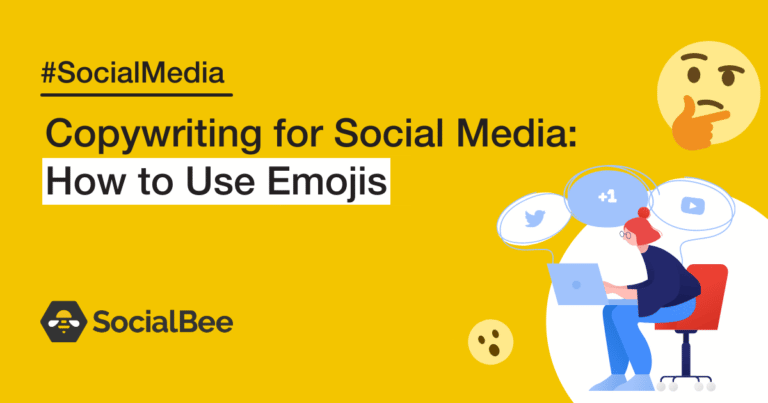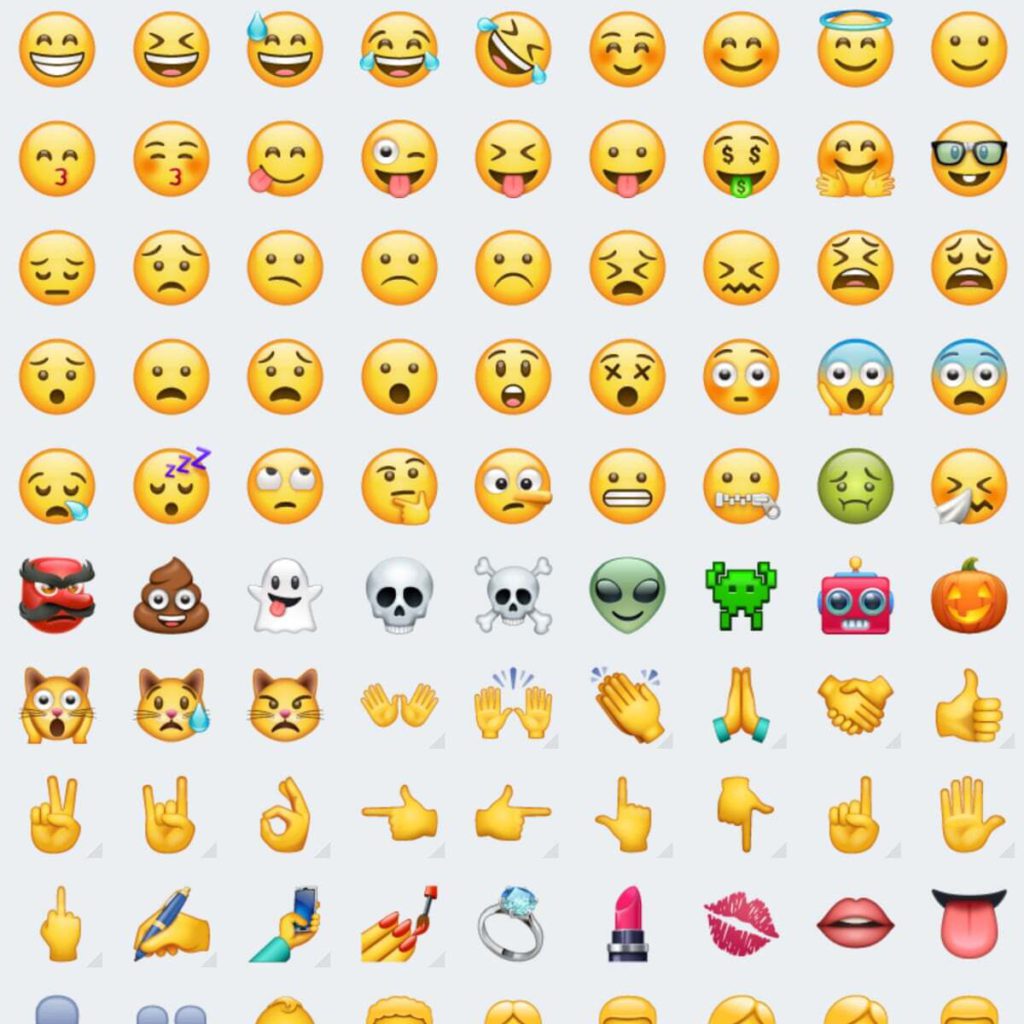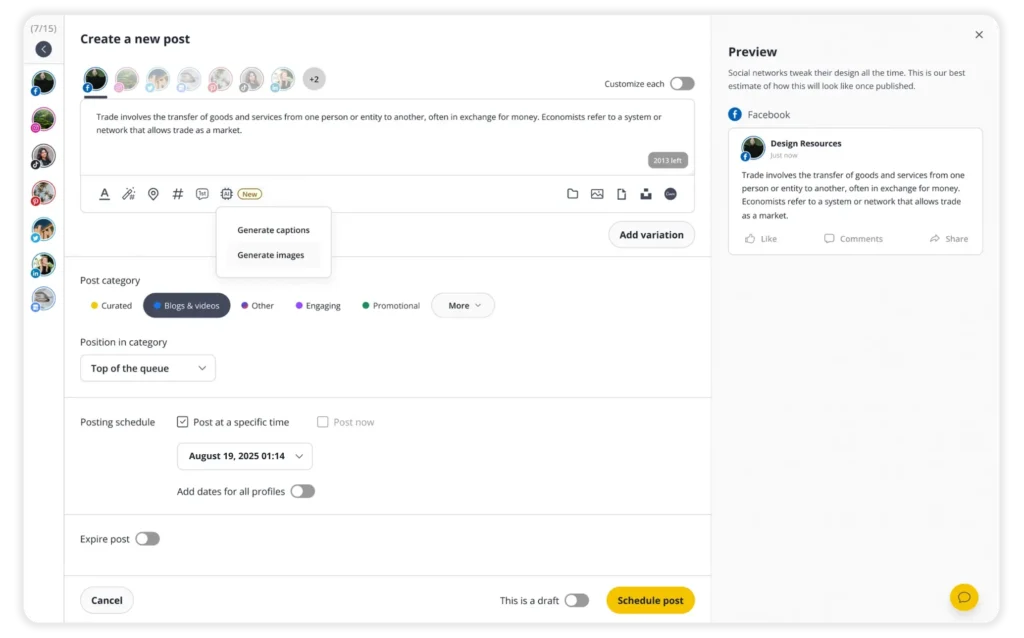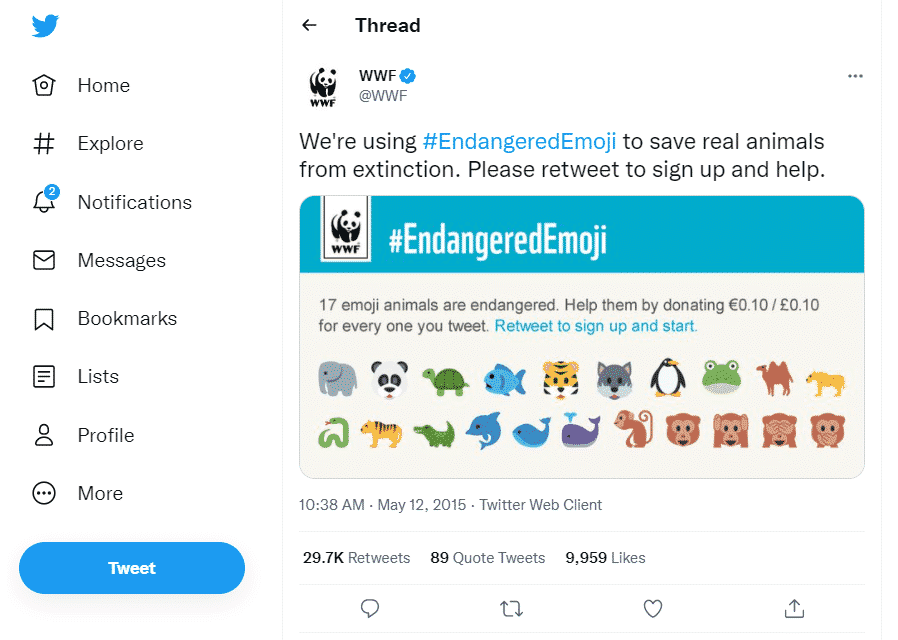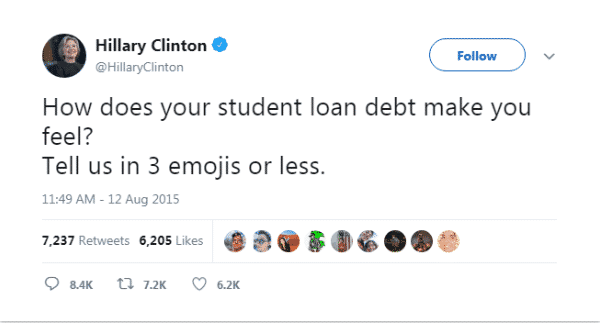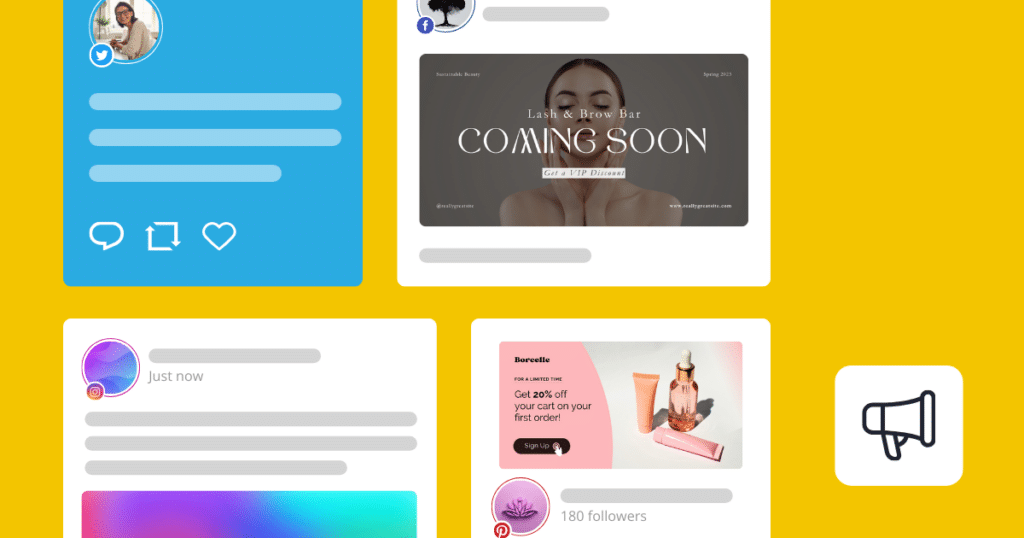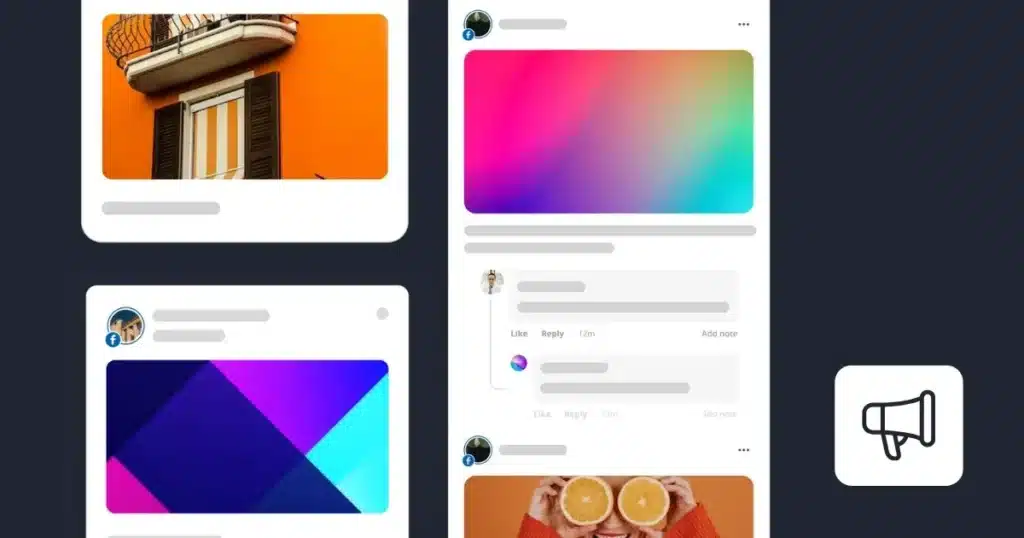| This is Chapter 7, Part 2 from the Copywriting for Social Media Guide. Make sure to download the full guide to learn how to create engaging posts for your audience and drastically improve your content marketing strategy. |
How to use emojis on social media? That is the question. And today we are going to provide the answer.
Nowadays, emojis have become the norm for social media communication, not just for the younger generations, but also for the ones that are just now beginning to explore the digital world.
That is why in today’s article we are going to talk about emojis, their benefits, how and when to use them in order to connect with your audience.
So, without further ado, let’s begin!
Plan your posts in no time with hundreds of post ideas and Canva templates.
We’re SocialBee LABS SRL, part of WebPros. We use the information you provide to share relevant content and product updates, as outlined in our Privacy Policy. You can opt out anytime.
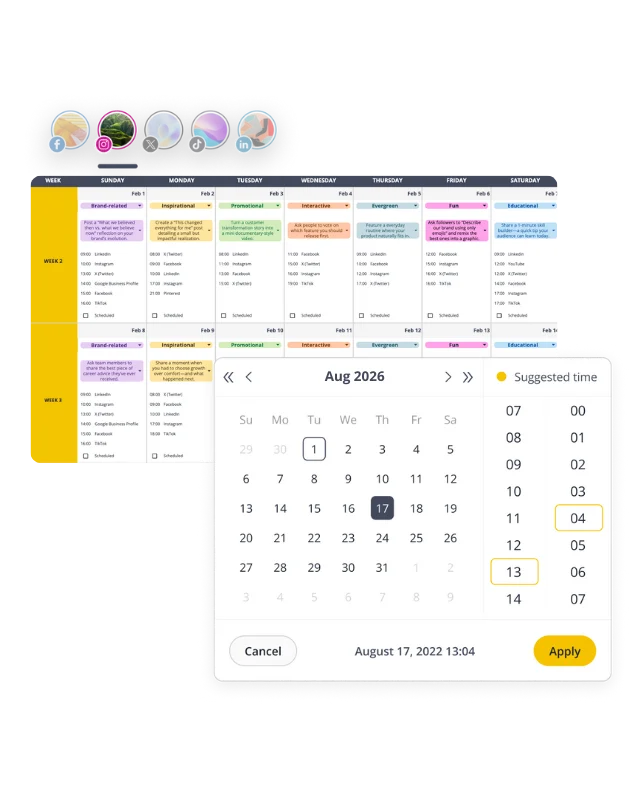
Emojis vs Emoticons
Before we dive into the details of emoji use, we need to make sure everyone gets the differences between emojis and emoticons. And no, they are not one and the same thing. Emoticons are made up of symbols you can find on your keyboard, while emojis are just small pictures.
What Are Emoticons?
Emoticons are punctuation marks, letters, and numbers used to create pictorial icons that generally display emotion or sentiment. Fun fact, the term emoticon actually comes from combining the words emotional and icon.
What Are Emojis?
In time, emoticons have evolved into their emoji form.
Emojis (from the Japanese e, “picture,” and moji, “character”) are pictographs of faces, objects, and symbols. You know… the distinct style of Apple’s emoji: yellow cartoon faces with different expressions, as well as families, buildings, animals, food, objects, mathematical symbols, and many more like this:
| Conclusion: If you bump into a smiley face that contains a character you can find on your computer keyboard, like this :), it’s an emoticon. In case it’s a little cartoon figure that is free from the binds of punctuation, numbers, and letters, like this one 😊, it’s an emoji. |
Furthermore, an important thing worth taking note of is that a certain emoji can look different based on the platform it is used on. In fact, researchers at the University of Minnesota have published a study investigating the potential for miscommunication using emoji across different platforms, networks, and devices.
Here is a demonstration:
So, be careful when using emojis on different social media apps, networks, and devices.
The Role of Emojis in Visual Marketing
Nowadays on social media, all digital marketers are counting on the use of visual marketing as a way to increase the reach and engagement of their posts.
Now, in order to stand out on social platforms, you need to work on your branding while also focusing on creating a distinct visual presence. And guess what? Emojis are definitely an important part of online social communication.
Studies show that 92% of online consumers use them. So, you have to consider reducing word count when creating your copy and making your marketing message look less cluttered and more visually attractive with emojis.
The Benefits of Emoji Use
Many forward-thinking companies are into using emojis to connect with their target audience. And, it’s a good practice because it provides some creative, unique brand building.
And, the general results of using emojis on social platforms are worth being noted:
- Facebook: 57% more likes, 33% more comments, and 33% more shares
- Instagram: 50% of all comments and captions contain emojis
- Twitter: 25.4% more engagement
Also, according to science when we look at a smiley emoji, the same parts of the brain are activated as when we look at an actual real human face.
As it turns out emojis have the ability to change our mood. Even more, it seems that we may even change our facial expressions when we look at emojis, to match the emotion of the emoji we are looking at. Simply, wow!
But enough about statistics, let’s look at how these cute little images can enhance your social media copywriting.
A. Get Your Message Across Easier
Emojis act as valuable additions to your content.
They have a universal quality to them — everyone understands their meaning. Therefore, it’s easy to convey feelings, express a certain emotion, grab attention and even tell a story on social by using these adorable inventions called emojis.
Digital communication can get tricky sometimes because you have to send a message to your audience without visual and auditory cues.
However, by using emojis you have a way of compensating for those two missing pieces and actually making sure you are sending the right message and don’t leave room for wrong interpretations.
B. Reach Younger Generations
As we all know, millennials and the generations following them grew up with online messaging and social platforms — therefore emojis are basically like second nature for them. And you, the copywriter (if you don’t belong to these generations), need to learn this language and discover how to use it properly on social media.
According to a study, 75% of men and 84% of women respondents think emojis are a better way to convey emotions than words. So, yeah, there’s no way out of it, you need to use emojis.
If needed, call a millennial friend and ask for help.
C. Humanize Your Business
Although millennials grew up with emojis, it’s not just them who love using them. Actually, almost everyone uses emojis.
When businesses start using emojis online, what they do is :
- Humanize their marketing content.
- Provide their brand with a little more personality.
Your online audience will feel like talking to a friend, not just a business, which will help you engage and build meaningful relationships with your customers.
D. Boost Engagement
Emojis help your audience engage with your business. Why? Because by using such symbols, you make your brand seem more approachable and friendly.
When used properly, emojis have the ability to lighten the mood and initiate interactions.
As a brand, try to get people to associate positive emotions with your business and products. And the best way you can achieve this is to use happy emojis. 😃
So, whatever you do, make sure to stay away from negative emotions and incorporate positive-looking emojis.
Also, when it comes to engagement, the best thing you can do is maintain a consistent posting schedule on all your accounts. And this can be easier than you might think.
Use SocialBee to schedule your post ahead of time, and make sure you never run out of content ever again.
With SocialBee, you can create your posts from scratch and have access to a comprehensive emoji keyboard. The best thing about this social media marketing tool is that you can preview your social media posts in real time even before posting.
This allows you to see if you need to add or remove emojis in order to have a well-balanced and structured social media post.
From SocialBee’s content editor, you can write your copy, import visuals from Canva, add relevant emojis, hashtags, and much more.
Start your 14-day free trial today to explore the SocialBee platform!

How to Use Emojis on Social Media
- Match emojis to your brand
- Use emojis in your posts and comments
- Be mindful of the context
- Get the placement right
Now that you are aware of the benefits of using emojis on social media, are you ready to learn how to use them?
Ready or not, here we go!
1. Match Emojis to Your Brand
Including emojis in your marketing plan is a great idea as they can make you sound fun and less strict as a brand. However, what you need to pay attention to is staying true to your brand.
What do we mean by this?
Well, if you are a Management or law firm, don’t start posting smiling faces with heart-eyes (😍) or kissy emojis (😘) to reach your audience. This may actually take away from your credibility. Also, stay away from the laughing emoji.
So, what you can do is find emojis that express your domain activity, or simply go with the good old smiley faces (😊) and thumbs up (👍), you can never fail with these.
Consider your tone of voice, context, and target audience when deciding on the emojis you want to use. Also, always rely on your marketing strategy — this will help you stay on brand and decide if emojis are right for your business.
The World Wildlife Fund has definitely managed to use emojis while staying on brand and raising awareness about endangered species.
2. Use Emojis in Your Posts and Comments
Using emojis when trying to connect with your audience is a smart move. So, when you leave a comment or when you are replying to a message, go for it. Using emojis in such situations will help build a faster connection with your audience.
| Pro Tip: Incorporate emojis in your social media posts and use them to emphasize your CTAs. |
Moreover, starting each paragraph with a relevant emoji can be fun. Just look at how Starbucks uses emojis in their Facebook posts:
3. Be Mindful of the Context
While including emojis in your content is great, you need to make sure you are using them where it actually makes sense.
You know what they say, there’s a time and a place for everything, even when it comes to emojis. For example, when it comes to sensitive or controversial topics, there’s no emoji you could use to make the situation better, so don’t.
This is what Hillary Clinton’s social media specialist should have considered before sharing the following tweet.
I guess you can understand why this Hillary Clinton tweet became famous… not good famous, obviously. While there are no emojis in the post, it’s clearly an inappropriate way to encourage communication.
So, when you want to add emojis to your messages, consider the tone of voice as well as the context in which you are planning to use them. Don’t just throw in emojis for the sake of being funny with no regard to the situation you are in.
You can really just make things worse, instead of adding value to your post copy.
In case you think someone might be offended by your emoji, avoid using one. Keep in mind that your customers may interpret an emoji differently than you. So try, to judge the situation from all possible angles.
4. Get the Placement Right
Not sure where to add emojis in your posts? Well, a good rule to follow is to treat them like punctuation marks. It’s better to use them at the end of a sentence, or at least after the words or sections they have to emphasize.
Additionally, you have to organize your emojis in a logical order, so that they make sense and enhance your communication.
Here is an example from Emojisaurus:
When to Use Emojis
So, when is the right time to use emojis?
Well, to be honest, it depends. And to help you figure out when it’s best to use emojis, we put together a set of questions you must answer before adding them to your social media content:
- Are emojis appropriate for your brand?
- Will emojis emphasize your message?
- Does your audience use or understand emojis?
- Have you checked the meaning of the emoji you are about to use?
- Is it appropriate for you to add emojis considering the context of your post?
The Don’ts of Emoji Usage
- Don’t use emojis instead of words
- Don’t add too many emojis
- Don’t force emojis in your content
- Don’t go for emojis you don’t understand
Now that you know how to use emojis in your online communication, let’s also go through some of the things you should avoid at all costs.
1. Don’t Use Emojis Instead of Words
While emojis are great for emphasizing messages, they are not strong enough to actually replace words.
So, if you want to make sure your audience understands what you want to say, it’s better to use your words. After all, you don’t want to take away anything from an important message in order to add a cute emoji. If they don’t make sense, don’t use them — they’ll add no value to your post if they don’t complement the message you want to send.
2. Don’t Add Too Many Emojis
Using too many emojis can backfire and make your posts hard to understand. You want your audience to understand what you have to say from the first read, not to make them treat your messages like a puzzle they have to put together first.
Consider limiting the number of emojis you use in one post. A maximum of 4 emojis should do the trick. More than 4 may just be too much and annoying. Keep some for your next post.
Balance is everything!
3. Don’t Force Emojis in Your Content
If you can’t figure out what emoji you should be using in the context of your message, chances are you don’t need to use one. So just skip the emoji.
4. Don’t Go for Emojis You Don’t Understand
Make sure to research the meaning of the emoji you want to use in your copy. From all the symbols you can use, you don’t want to choose the wrong one that totally takes away from your message.
This way you’ll avoid any surprises and meaning you may not have been aware of. To stay safe, you could try Emojipedia to get the details you need about a specific emoji.
Frequently Asked Questions (FAQ)
1. How Can I Add Emojis From an Android Device?
Here is how to add emojis from an android device:
- Open any messages app where you can write
- Tap the text box
- Tap Emoji
- Tap on the emojis you want to use
- Tap Send
2. How Can I Add Emojis From an iPhone:
Here is how to add emojis from an iPhone:
- Open any messages app where you can write
- Tap the text box
- Tap the gray smiley face to see all emojis and swipe left or right to view more.
- Tap an emoji to add it to your text
3. How Can I Activate the Emoji Keyboard on My Phone?
Here is how to activate the emoji keyboard on a mobile device:
- Access Settings
- Go to General and tap Keyboard
- Tap Keyboards
- Tap Add New Keyboard
- Tap Emoji
4. How Can I Use Emojis From a Windows Computer?
Here is how to add emojis from a Windows computer:
- Press Windows logo key + the period symbol (.) to access the emoji keyboard
- Go through the emoji categories or type words in the search bar to find specific emojis
- Click any emoji to insert it
5. How Can I Use Emojis on My Mac?
Here is how to add emojis from a Mac device:
- Press the Fn key to enable emoji keyboard
- Go through the emoji categories or type words in the search bar to find specific emojis
- Click any emoji to insert it
Bottom Line
Well, we reached the end of our emoji chapter, but it’s only the beginning for you.
And remember, while using emojis, make sure you:
- Stay true to your brand.
- Understand the meaning of each emoji you want to use.
These two aspects are essential because you want to maintain your credibility while sending the right message. As long as you follow this last piece of advice, you will be just fine.
Don’t forget that the 14-day free SocialBee trial awaits for you! Start using SocialBee today to create, schedule, and post your social media content with ease. And don’t worry, we have all the emojis you need to put into practice today’s tips.

